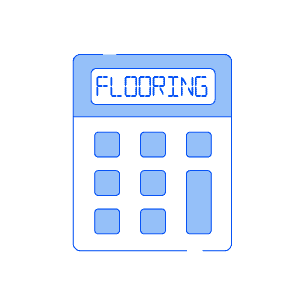Bamboo Flooring Guide (without a sales pitch)
Learn everything insiders know about buying bamboo flooring.
Carpet Captain doesn’t sell flooring, but we have helped nearly one million people buy it
without a sales pitch.
Captain’s Bamboo Highlights


- Bamboo flooring performs like and is considered a type of hardwood flooring
- This means more of an investment than many floors, but also a more luxurious look and resale value.
- Bamboo ranks in the top 25% in types of hardwood as far as hardness/durability
- Engineered bamboo is better in rooms with moisture, and it may be easier to install
- If you get solid/non-engineered bamboo, “woven” bamboo is the most durable.
- Some manufacturers are cutting down bamboo early to save on costs, but this negatively impacts the durability. Go with bamboo at least 5-years old.
- Acclimate bamboo by sitting it out in your room for 72 hours prior to installing it.
Chapter 1: Bamboo flooring pros and cons
Bamboo is often considered a “species” of hardwood, so it shares some of the same advantages of hardwood: luxury floor, easy to maintain, can be refinished. But there is also a lot unique about bamboo you’ll read below.
I also find it interesting because many of bamboo’s advantages can also be its disadvantages depending on how it is sourced, manufactured and treated.
Here are the pros of bamboo flooring:
- luxury appearance that upgrades the value of any room/home
- ability to be refinished so it can last for decades
- more water-resistant than some hardwood (but moisture and bamboo still don’t mix well)
- trendy flooring because it’s unique and natural is “in”
- less expensive than many wood floors
- bamboo flooring is easy to clean
Here are the cons of bamboo:
- variability in harvest and construction results in some bamboo being soft and surprisingly poor durability
- depending on the adhesives used, can emit a high level of VOCs (indoor air pollution)
- generally eco-friendly but some greedy businesses use growing practices that are not eco-friendly
- sitting water or even constant high humidity can damage bamboo
- can scratch relatively easily with animal claws, high heels, etc
The good news is most of these cons canbe avoided by picking out specific features in bamboo that prove it’s quality. Don’t worry, we’ll cover how to pick out bamboo, but let’s first make sure bamboo is in the budget…
Chapter 2: Cost of bamboo flooring
You can’t talk about a floor without having an idea of the price. Like most floors, there’s a huge range with bamboo. Poor quality bamboo can be had for as low as $1 sqft, and if you really want to splurge for a unique bamboo, you can pay over $10 sqft.
With that in mind, I’d expect to pay around $4 sqft for bamboo materials and $5 to have it installed. $10 per square foot is a good total estimate for a good quality bamboo floor installed.
Want a quick estimate on your bamboo flooring cost by answering just 3 questions? Check out our free flooring cost calculator.
Chapter 3: Picking out the perfect bamboo floor
Picking out bamboo isn’t as simple as choosing a color you like.
We hinted at this earlier, but you’ll have multiple options for manufacturing processes, species, and chemical treatments that will have a huge impact on how your bamboo performs.
The challenge with bamboo is there is no universal grading system. Sometimes stores will divide bamboo’s in “qualities,” but this is just their opinion. Nothing is stopping them from labeling a floor as “A” quality even if it’s poor quality just to sell it for more money.
So how can you find bamboo flooring that is as durable as you want it to be, not exposing your family to toxins, good for the environment, and will last you decades?
You’ll have a few decisions to make. Let go over these decisions one-by-one:
Solid vs engineered bamboo
When you buy a bamboo floor, there are solid or 100% bamboo floors and engineered bamboo floors.
What’s the difference and which do you want?
Solid of 100% bamboo is pretty straightforward: It means the floor is only made of bamboo. That is, the only main structural part of the floor is bamboo. It can still be treated with other substances and chemicals. In fact, all bamboo floors (solid or engineered) are composed of strips of bamboo that are stuck or woven together.
Engineered bamboo has a bamboo outside, but different materials in the core. Engineered bamboo tends to feel and appear just like normal bamboo would, but it has better moisture resistance and may be easier to install.
Manufacturing techniques that may affect the durability and appearance
If you choose 100% bamboo, the strips of bamboo have to be pressed together in some way. This will give each bamboo a unique look but there are also a few notes on how it could impact how your bamboos performance:
Horizontal bamboo (aka flat grain) is pressed together so the strips of bamboo are laid down and the natural pattern of the bamboo as you’d see it in nature is what you see on the floor face.
Vertical bamboo (aka vertical grain) is pressed together with bamboo strips “standing” on their side. This means the floor face is the side of the cuts of bamboo. You don’t see the natural pattern of bamboo but a more linear pattern. This style may be slightly less durable than horizontal bamboo.
Woven bamboo (aka strand bamboo) is your most durable manufacturing options. As the name sounds, the strands of bamboo are woven together. This type of bamboo is significantly stronger, more resistance to moisture and less chemical adhesives are needed to create it.
 Captain’s message worth repeating! The above block of text is easy to overlook, but I think it’s worth repeating: woven bamboo is superior to vertical and horizontally manufactured bamboo. If it’s not out of your price range, it worth splurging on for most people. It will last longer and lead to healthier air quality.
Captain’s message worth repeating! The above block of text is easy to overlook, but I think it’s worth repeating: woven bamboo is superior to vertical and horizontally manufactured bamboo. If it’s not out of your price range, it worth splurging on for most people. It will last longer and lead to healthier air quality.Engineered bamboo
What is engineered bamboo vs solid bamboo? Engineered bamboo is basically a “veneer” or sheet of bamboo manufactured together with other products that give the “base” of the floor. In other words, it gives the appearance and outside coating of bamboo, but is not truly a bamboo floor.
The clear drawback of this is you’re not truly getting a bamboo floor if that’s what you want. The big advantage of engineered bamboo is it fixed one major problem with bamboo: moisture resistance. Engineered bamboo is very moisture resistant, so it may be your only option if you want bamboo in a room that may have very high humidity or moisture problems.
Age is important
Like a fine wine, bamboo is much better with age. This is more than just a detail with bamboo floors, it might be the most important specification to determine it’s durability.
Most bamboo floors are made from the Moso species in China.
Normally, Moso bamboo takes 5-6 years to reach full maturity. At maturity, Moso bamboo is 40-80 feet tall and has a base diameter of 4-6 inches.
Until the plant is fully mature, the bamboo strands are not as dense or as strong as they could be. That weakness then gets transferred to your floors, and that is a major reason why you will sometimes see or hear of bamboo floors that break apart, split, or warp. Discount bamboo companies harvest the younger plants to lower costs and grow their sales, but it comes at an unfortunate price to the consumer.
The best way to find this out is to ask the retailer about the sourcing and harvesting before you purchase the floor. If they do not know, you can do extra research on the manufacturing company online.
The takeaway? Make sure your bamboo is at least 5 years old.
Color can actually give you insights into durability
You can find bamboo in stains or natural colors, and those will have little effect on the durability factors of your bamboo flooring. However, another color process can have a negative impact on your new floor.
Carbonized bamboo floors are known for their rich brown hue, but the term does not just refer to the color but also the baking process used to create it. The high heat or steam caramelizes the bamboo strands to change their color throughout the entire board – not just the visible surface. It’s touted as a way of keeping the same color even after sanding down the surface layer to remove a scratch or other imperfection.
This is true, but it also softens the stalks inside the bamboo. How much of an impact does this have on the bamboo’s performance?
I’ve heard the carbonization process weakens bamboo anywhere from 10 to 30%.Who knew the color you choose could make a difference on the durability of your floor?
So what’s the takeaway? For some, I say if you want a dark floor go with a naturally dark hardwood and avoid bamboo. That said, if you really like bamboo, you can still get a pretty durable dark bamboo, you just have to pay more attention to all of the other details.
Finish types and pre vs unfinished
You can opt for pre-finished bamboo or unfinished. Pre-finished means it arrives at your home ready to be walked on. Unfinished means you have to finish the manufacturing job. That means you sand down the bamboo and add a finishing coat. For 99% of people, I think it makes sense to have the factory finish the floor for you (who wants extra work?!)
Plus, factory finishes are usually applied in ways that end up in a more durable product than you could replicate at home.
If you get pre-finished laminate, aluminum oxide with a ceramic topcoat is the premium option. Water-based polyurethane coats vary but can also be very durable when applied correctly (which it should be at the factory).
Chapter 4: Installation notes and tips
Whether you’re having your floor installed or DIY, there are a few things that are important to know. Poor installation can lead to ruined high-quality bamboo.
Types of installation
There are three main ways to install bamboo flooring: glue-down, nail-down, or a floating floor.
Gluing the bamboo is one option. This applies to the bamboo directly to the floorboard giving it extra stability, which is best if you have lots of heavy furniture that will be resting on your floor. Urethane-based glues tend to be the best for bamboo but you will need to ask the flooring manufacturer to be sure.
This method is usually done by professionals because it requires a ventilator and keeping the home properly aired out to disperse the glue fumes. The costs will vary depending on your local labor but if you do it yourself you should plan on having to buy the respirator, trowels, and glue separate from the floor. Otherwise, you are only responsible for the contractor’s rate and the glue materials.
Nailing a bamboo floor is very much like nailing any hardwood floor. It’s best to use a pneumatic nail gun on bamboo, so many homeowners who are not used to working with those choose to hire an expert. The good thing about nailing is you don’t have to deal with glue fumes.
The most DIY-friendly method is to install a floating floor. If you have a contractor the costs of installing a floating floor will often be less than the costs for either of the above methods because it takes less time and fewer tools. For the DIY’er, the click and install floors can be learned fairly quickly since the pieces are designed to snap together.
A few other notes on added complexity that might add to your installation costs: stairs and multiple small rooms will add time and therefore money to the project. Installers may also charge for having to prepare the subfloor, molding, and baseboards. If you choose added insulation or need to add sealants or finishes to the bamboo floor, that will also need to be considered in the final price.
 Captain’s warning! If you want to DIY, I see floating floors as the only option. Not all bamboo floors can be installed as floating floors. They have to have a “click and lock” or “tongue and groove” system that allows the pieces to snap together like puzzle pieces. Even then, make sure to read up on installation because there are few tips you’ll want to ensure it goes smoothly like giving the bamboo floor a little space from the wall for expansion.
Captain’s warning! If you want to DIY, I see floating floors as the only option. Not all bamboo floors can be installed as floating floors. They have to have a “click and lock” or “tongue and groove” system that allows the pieces to snap together like puzzle pieces. Even then, make sure to read up on installation because there are few tips you’ll want to ensure it goes smoothly like giving the bamboo floor a little space from the wall for expansion.Acclimating your bamboo to your home
Bamboo will expand and contract based on the environment it is in. This is primarily due to the humidity.
To get your bamboo used to your home, you need to give it at least 72 hours in your home. This reduces the chance of buckling and warping after installation.
Some bamboo will require longer, particularly woven bamboo. Unsure of how long to let it sit? The manufacturer should be able to tell you.
One other important note: this doesn’t just mean getting boxes of your bamboo and setting it in your home. You need to actually lay the bamboo out so the maximum possible area is exposed to the air inside your home.
Chapter 5: Where to buy bamboo flooring
Bamboo used to be a specialty item you had to order online. Today, most flooring stores will give you bamboo options. I have an article on the pros and cons of buying flooring at different stores. That may be worth reading if you’re undecided.
A quick summary: If you know what you want (hopefully this guide helped), you could consider online to save money. This is especially true if you plan on getting a floating flooring and installing it yourself. If you’d like a little more advice or suggestion, local stores or even big box stores in some cases might be your best best. I’d definitely recommend a local store if you have a more complicated installation job or situation and would like advice on installation and flooring in general.
Captain’s parting words
You now know why bamboo can vary so much in price, and picking out a durable and eco-friendly bamboo (if you want both) shouldn’t be a problem.
I love bamboo when it’s done right: it’s a more eco-friendly and unique hardwood. If anything turns you off about bamboo, you could check out my unbiased hardwood guide or my hardwood species guide to pick out a specific hardwood.
Any questions on bamboo flooring, other than how to clean it? Let me know in the comments below.







How about bamboo and cats? Not scratches, urine. Yuck
Cat pees a problem for any floor, but if your cat pees on the floors frequently, I’d go with something cheaper like luxury vinyl or laminate. Like other hardwoods, bamboo will have a sealant protecting it against things like cat pee, but if the seal is broken or the pee gets in-between area of the installation, it can be a big problem.